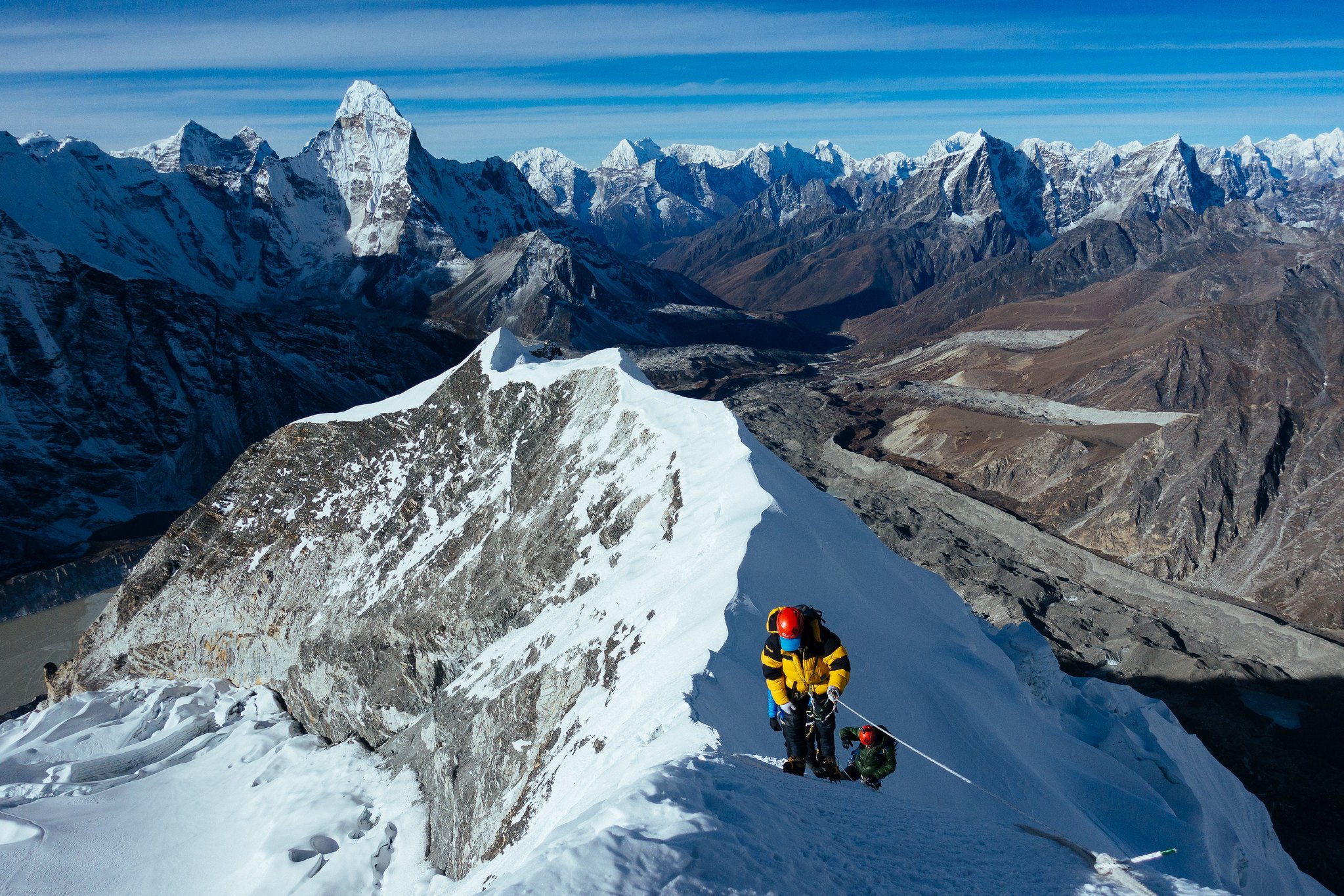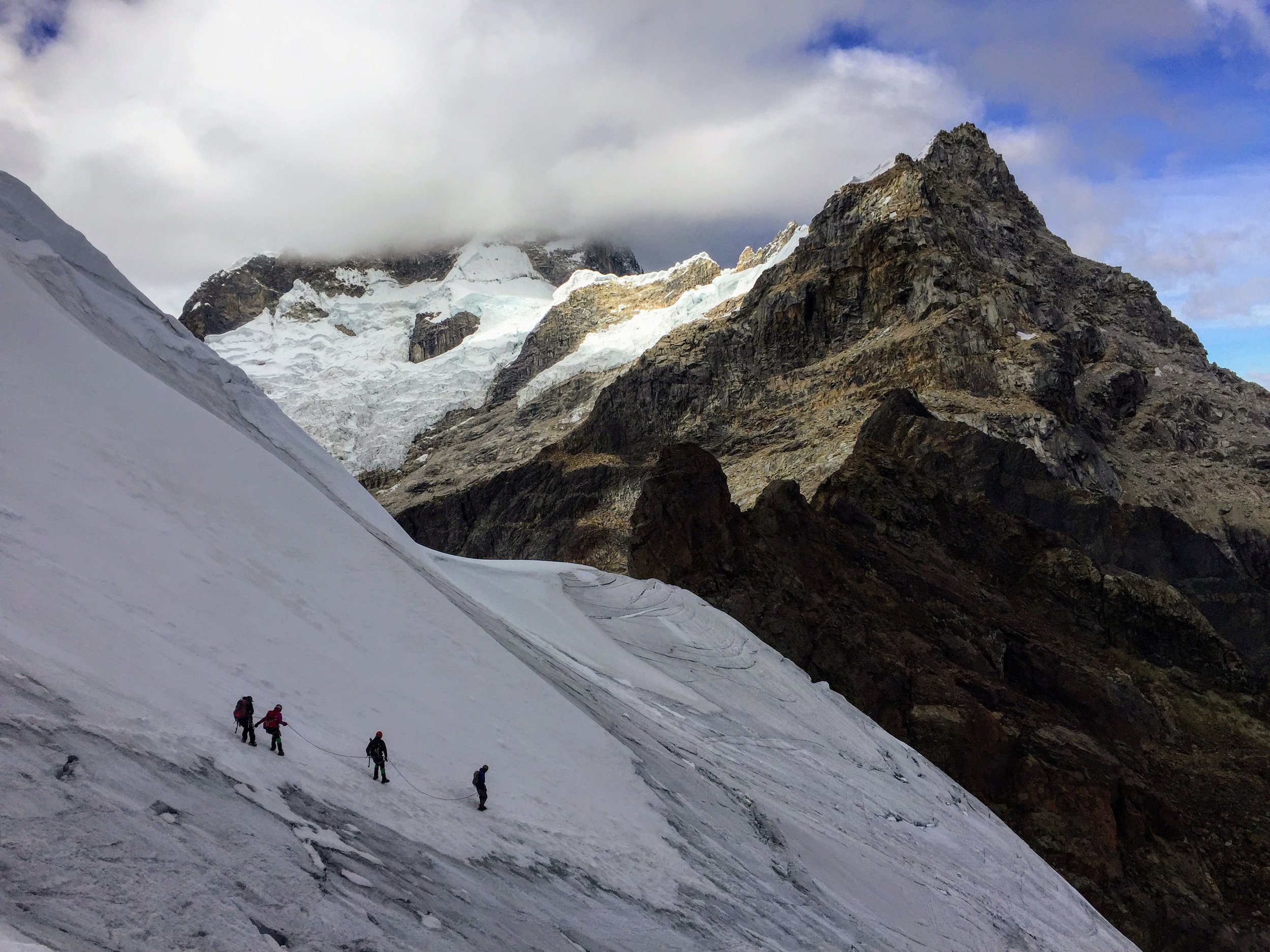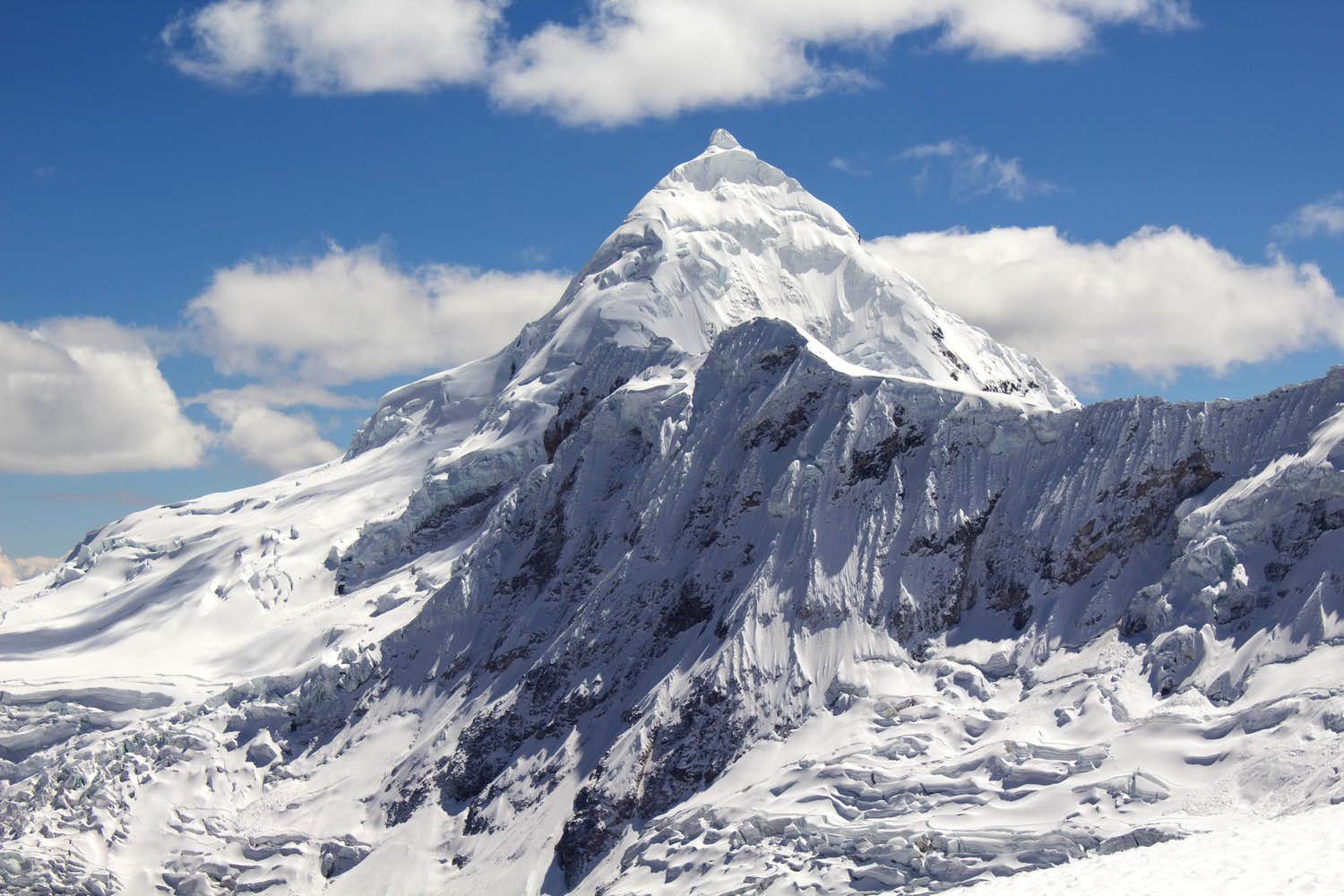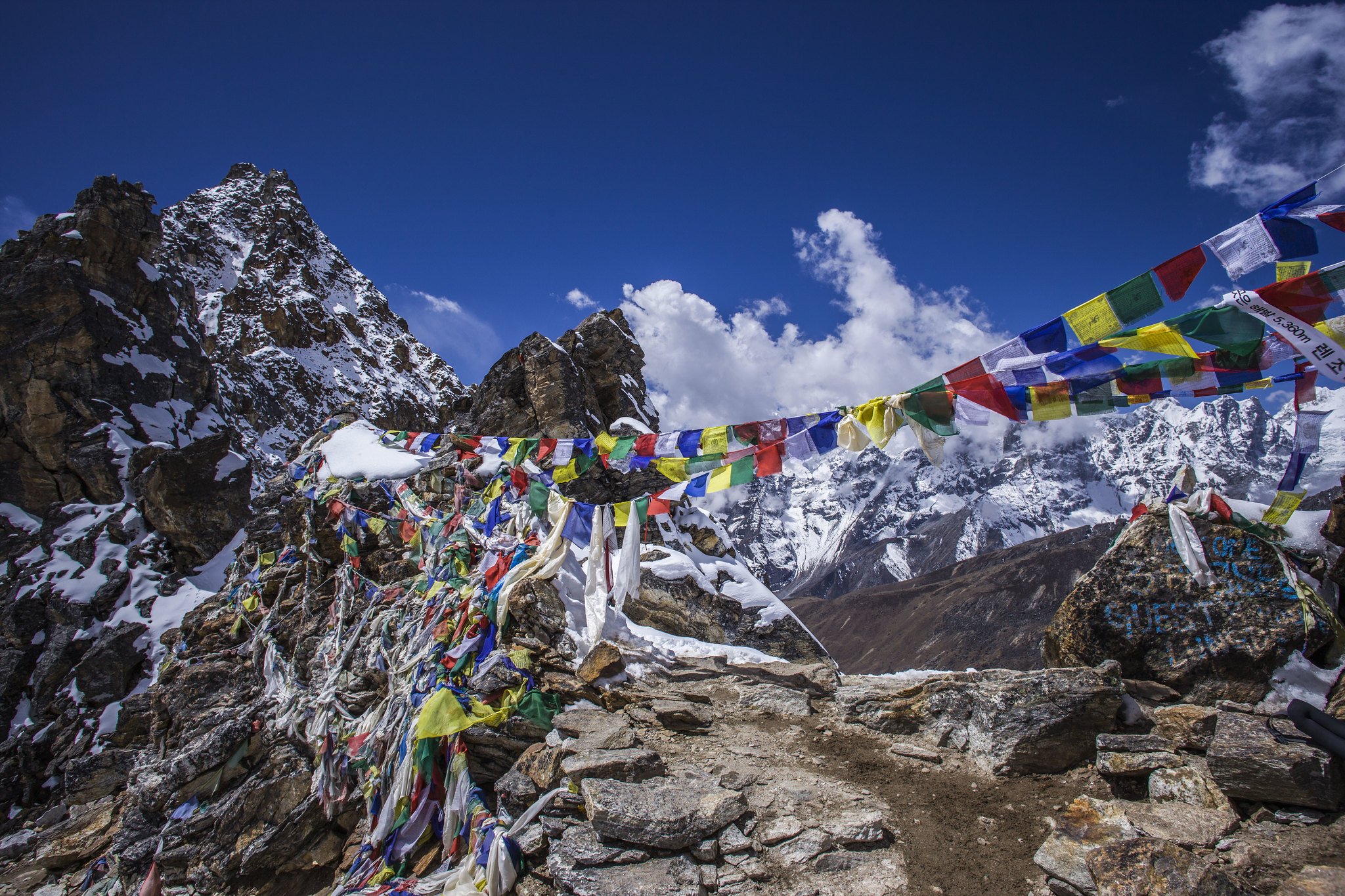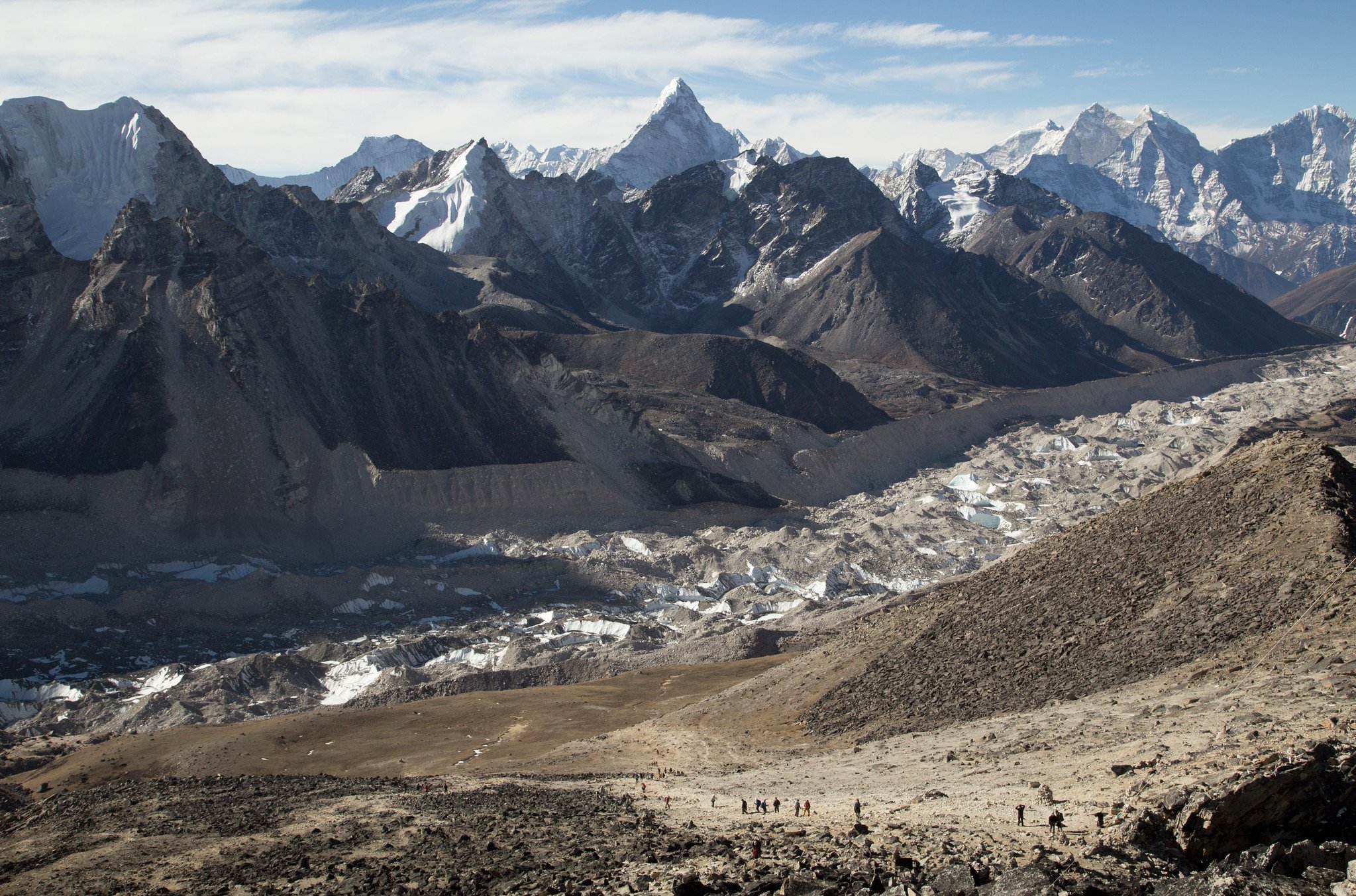Three Peak adventure challenge - Namas Adventure
For anyone seeking the ultimate challenges and an adventure of a lifetime, the three peak adventure challenges are the adventure trip go on. Not only are the climbs amazingly beautiful and exhilarating but is also a test of your will, character, and endurance. These adventures are not the biggest or the most technically difficult peaks to climb but the fitness it demands and how you push yourself to overcome the challenges is second to none.
We have two amazing itineraries in two different countries and a bonus three-pass challenge for the no-climbers who seek hiking challenges. These expeditions are for the ones who want to stay away from the busyness of the daily world and just enjoy their climb, seek challenges, test their will, go into the remote corners just to be one with nature, adventure and themselves.
Khumbu Three Peak Expedition
If you want to explore the best of the Khumbu region that covers the vast array of gem destinations, overseeing all the giant peaks that we have all been inspired throughout then the Khumbu three-peak expedition challenge is your ultimate adventure. Not only will you be climbing all the peaks over 6000M (Lobuche East 6119M, Island Peak 6189M, and Mera Peak 6476M) this expedition but also crossing over 5 high passes above 5000M+ throughout your itinerary. This expedition is suited for beginner or intermediate-level mountain climbers. But you will need to be in your top shape. There is no way around this if you want to enjoy and accomplish this amazing adventure challenge.
Summiting 3 amazing peaks is one accomplishment but exploring the cultures, hospitality, and warmth of Nepalese people leaves a lifelong mark. Other landmarks highlighted along this expedition are Lukla airport, Namche Bazaar, Gokyo lake, Everest three high passes, Everest base camp, Amphu Lhbatsa pass, Chetra La pass.
Want to take on this 30-day climbing challenge in Nepal? We organize private or group expeditions every year. Find out more on the expedition link below
For anyone seeking raw and remote climbing challenges in the South America, climbing in Peru is one of the best destinations. With just 16 days of expedition, our three-peak challenge in Peru allows you to climb three amazing peaks in the Cordillera Blanca region.
This is another amazing itinerary for anyone seeking climbing adventure challenges during summer. Our itinerary takes you through 2X5000M peaks and 1X6000M peaks where the difficulty increases gradually with each peak. Tocllaraju 6032 is the most difficult and long climb. Tocllaraju is the toughest and is quite a nutcracker. This final climb will test your adventure and fitness, making you dig deeper and push further. We climb in the remote region of Cordillera Blanca soaking in the beauty of the region and exploring the remote parts of the country.
Join us at Peru every year summer for this amazing three-peak expedition challenge.
This one is one of the holy grail treks of the Everest region. While the Everest base camp trekking route is the busiest trail, this itinerary avoids the crowds and explores the hidden gems of the amazing Everest/Khumbu region. This 22 days trekking adventure is for anyone who does not want to climb peaks but rather enjoys the uphill hike and challenges themselves on high altitude passes.
A perfect way to spend long days in the mountainous terrains of the Everest region, explore local cultures, traditions, amazing beauty, and take on the challenges. Trekkers will have to be fit to take on this particular challenging trek. The main highlights are Lukla airport, Namche Bazaar, Gokyo lake 4700M, Renjo-la pass 5370M, Cho-la pass 5420M, Kongma-la pass 5545M, Kalapatthar 5644M, and Everest base camp 5346M.
If you want a non-technical, high altitude, non-mountain climbing adventure challenge in the Everest region then this expedition is the one for you. Join us in Nepal every year spring and summer for this amazing Everest three-pass trekking challenge.
Everything you need to know about three peak expedition, Peru - Namas Adventure
Everything you need to know about Three peak expedition, CORDILLERA BLANCA, Peru
1. Which mountains does Three Peak expedition include?
Nevado Mateo 5150M
A perfect summit to begin our expedition. In just one day we will climb through moraines, glaciers to reach the summit. The climb is non-technical in nature giving us perfect acclimatisation or an entry-level peak to climb in the Cordillera Blanca.
Nevada Ishinca 5530M
Ishinca 5530M is one of the most beautiful and interesting peaks to climb in the Ancash region. Ishinca can be used as a climbing objective or acclimatization peak before climbing other 6000M peaks in the region. Excellent peak to climb for skilled mountaineers and can also be used as a training peak. Gradual climbing is recommended with a base camp set up and is suitable for climbers seeking less technical routes.
Tocllaraju 6032M
Tocllaraju is a beautiful mountain that dominates the view in the Ishinca valley. Shaped like a beautiful pyramid, Tocllaraju 6032M is one of the challenging peaks to climb located in the central-southern part of the Cordillera Blanca.
We will climb via the standard route, the North-West Ridge to the summit. The most technical part of this peak is the overcoming of the bergschrund at the base of the summit mushroom and the slope above it, which can be graded at AD/D- depending on the conditions of the crevasse and ice section in the same area. On the ridge and final climb to the summit, we will have to use ice climbing techniques to climb to the summit.
2. When is the best time to climb the Three Peak Expedition?
Three peaks are best suited to climb during the summer season every year. June - August or mid-September are the best time to plan this expedition.
3. Is it possible to shorten this Expedition?
Yes, this trip can be shortened. Climbers can choose to summit just 1 or 2 peaks out of 3. A guide member will assist the climbers all the way to Huaraz and return arrangements to Lima will be arranged accordingly.
4. How much does it cost to climb the Three Peak expedition in Peru? What does the cost include?
With Namas Adventure, the Three Peak expedition costs $4300 | £3150 | €3700 P/P. We provide premium high-quality all-inclusive peak climbing services. Climbers do not have to worry about anything with our team and totally focus on their climbing holiday and fun times ahead.
List of what’s included in your booking.
1:1 Certified Mountain guide (UIAGM – AGMP)
$200 Individual tip pool. * Tip pool will be fairly distributed among all Namas staff members. (Guides, porters, drivers, hotel security, and staff). Guest may personally hand in extra tips to our guides and porters.
Namas Branded merchandise (Down Jacket, Cap, Buff)
Transfer airport/hotel / airport – Lima
City touring Lima
Bus ticket Huaraz / Lima, executive service in public bus-Movil Tours or Cruz del Sur
Transfer/bus station/Hotel – Lima
Transfer hotel/bus station – Huaraz in Hotel
Hotel In Huaraz, according to the program 04 nights. Double room with breakfast included
02 Nights Hotel in Lima / Double room with breakfast included
Tour of Acclimatization
Cook and Helpers
Porters, donkeys, and drivers
Entrance fee National park Huascaran
Private transportation Huaraz / according to the program/Huaraz
Complete meals during the trek program and climbing program
Kitchen/dining tent
Cooking equipment
Collective technical equipment
Tent for 2 Person
Toilette tent
First Aid
5. Are guides necessary for this expedition?
For beginner to intermediate climbers, we highly suggest climbing these peaks with guides. This trip lasts for 16 days so you can expect a lot of tiring and dreadful days (especially during the Tocllaraju climb) so to keep you safe and going experienced guides is very essential. New technical hazards may appear every climbing season as you never know with the mountains. So to have a safe and successful expedition local knowledge and guidance are key and very important.
6. What is the best acclimatisation itinerary for the Three Peak expedition?
Mera Peak high camp 6100M
For climbers, acclimatising properly for high-altitude climbing trips is a must. Our expedition itinerary planning allows you to acclimatize to higher elevations, giving your body the time it needs to adjust to the altitude. With years of guiding experience and well-known scientific literature, we know that this is the only way for your body to adapt after gaining elevation. With that knowledge and experience, our team has built up the itinerary for the three peaks.
On our Three peak expedition, we make sure your first and second peaks are slowly and gradually helping climbers acclimatise. Your body needs these adaptation periods when you are above 5000M+. This way you can experience alpine camping, enjoy the mountains all around you, and gain enough strength to make your summit climb. Once you have successfully summited two of three peaks then your body will have already acclimatised for the final peak - Tocllaraju 6032M.
7. What training is required to climb the Three Peak expedition, Peru? Can you suggest to me a training plan?
All three peak in this itinerary is by no means an easy walk in a park climb, even though we grade it as a beginner’s to intermediate climb. The first two peaks Mateo and Ishincia are non-technical climbs, so with good fitness, you should be able to summit these mountains. Mountains are graded based on their technical and physical difficulties. For your training, we highly recommend climbers focus on endurance and strength training. Any type of aerobic exercise, like long-distance running (15km - 20km) 3 to 4 times a week, cycling (1 hour - 2 hours), hiking gaining elevation with 10-15kgs weights on are some of the suggested training. Kettlebell routine training can be implemented or Cross-fit training is also suggested. More on our training mountain expedition blog.
Courses like beginner mountaineering classes are also a helpful tool. You will learn technical skills like climbing with a rope on 5/6 anchor points using ascenders, how to walk with crampons on ice, snow, and rock, and to be efficient with abseiling and overall gear safety checks awareness.
8. How hard is Three Peak Expedition climb in Peru?
Mountain Grades: Nevado Mateo (F), Nevado Ishinca (PD) and Tocllaraju (AD) (Alpine grading link)
Tocllaraju 6032M
Nevado Mateo and Nevado Ishinca are achievable objectives for climbers of all experience levels. Yes even for the beginners. Tocllaraju is the most challenging peak in this expedition. Technical skills of climbing high in the altitude around 5900M with an ice axe are required. Traversing and climbing ridgelines are a must, thus climbers must be comfortable with higher altitudes.
Summit climbs are the most difficult and longest days. Breathing is always a challenge at high altitudes but with proper acclimatization done ahead of time, staying well hydrated, eating properly, your body should recover and adapt to the altitude. Once you depart from base camps the real alpine challenge begins, mostly climbing on steep ice and snow surfaces. You will be walking/climbing/descending for almost 10+ hours on each summit day. Summit day climb starts early (3 or 4 am) with the goal to reach the summit or near the summit by sunrise. This will be the most challenging and rewarding part of the climb. Since this itinerary is only successful after summiting 3X 6000M+ peaks, climbers will need to have a lot of endurance stamina in their banks. All your previous physical training, your will, mental strength, and your grit for real adventure will take you through to complete your expedition.
9. What are the clothing and gears - boots required for this expedition (trekking and mountaineering)?
Choosing the right gear is very important. We advise climbers not to make compromises on the quality of gears and clothing, and to pay attention to layer up comfortably as well. You will highly depend on your clothes to keep you warm, especially during the night when temperatures can go down to -10/-15. Please check our equipment blog for recommended clothing and gear.
Boots (trekking and mountaineering)
With better technologies, climbing shoes have improved every year. We highly recommend double-layered boots like La Sport G2Sm or Scarpa phantom. It is wise to spend on good mountaineering boots, as so with all the gears that we have mentioned in this post above.
10. What types of foods are available during the expedition? Is clean water available and how much water intake is recommended?
Yes, mineral water is available to buy in most of the tea houses. During base camp and alpine camping days, we will access water via the river or boil frozen ice which will be collected by our kitchen team. We suggest all our clients drink 2 - 4 liters of water every day. Staying hydrated will also help you with acclimatizing properly. It’s best to take hydration tablets or filtration bottles with you.
Most of the foods are prepared in the tea houses and during your climbing days, kitchen tents are set up by our kitchen staff members. You do not need to worry about food but remember to eat enough. Special Peruvian local dishes are prepared by our kitchen team members. In the high altitudes, your body will naturally want to reject food or avoid using energy on anything, which includes eating too. You might have to force yourself with the first few couples of bites and then eventually your body will start accepting the food. We also provide packed dried meals, so that clients have other options should they not want to eat what’s being cooked in the tents.
11. What trip insurance will I need for this Three Peak expedition? Do I need helicopter evacuation to be included in my insurance cover?
No matter how prepared you are, you never know when or how things might go wrong. You might be sick suddenly or not that we wish but there might be some incident, you might suffer from altitude sickness or anything we can’t imagine yet. So, for these reasons, it is always good to have insurance cover. Our recommended Insurance companies (link)
Peru doesn’t have a helicopters evacuation service, all the rescues are on land. Rescuers from the Mountain Guides Association of Peru do this work. Insurance should include up to 6000M climb which should cover all medical expenses.
Yes, it is very important. Many of our expeditions are in remote places with no roads and developing medical services. In the unlikely event that you get sick, you want to get good medical care ASAP.
Coverage varies based on your nationality and the trip that you are taking with us. Our recommended providers are found on our Travel and Rescue Insurance page. When you have booked a trip with us, we will also send you more comprehensive information on various insurance options.
12. Which other high-altitude peak climbing can I aim for after the Three Peak Expedition in Peru?
Once you have completed your Three Peak expedition with us in Peru when you feel like you want to take on higher peaks we can suggest other 6000M - 7000M+ peaks that you can aim for.
BARUNTSE 7129M EXPEDITION
Baruntse 7129M summit, Mera Peak 6476M (Acclimatisation training peak)
South-east ridge route, Camp 1 - 2 strategy
5-10 days in Baruntse Base camp 5460M and higher
1:2 Guide/Client ratio throughout the expedition
Amphu Lhabtsa Pass 5800M and Khumbu Valley
Himlung Himal Expedition 7126M
Himlung Himal Summit 7126M
The south flank of North-west ridge route, Camp 1 - 3 strategy
7 - 13 days in Himlung Himal Base camp 5460M and higher
1:2 Guide/Client ratio throughout the expedition
Nar & Phu Villages and Manaslu conservation area
PUTHA HIUNCHULI 7246M
7246M summit
Camp 1 - 3 strategy
5-14 days in Base camp 5460M and higher
1:2 Guide/Client ratio throughout the expedition
Far western region of Nepal, isolated and remote Dolpo region
Lobuche East 6119M and Island Peak 6189M
Conclusion
Three Peak expedition in the Cordillera region of Peru is one of the most exhilarating adventures of a lifetime. Like every other mountain climbing trip, this is a worthwhile adventure. We hope the information we have provided above will help you decide/prepare in the best way before you embark on your three Peak climbing expeditions. If you are looking for a great climbing trip and have an amazing time in Peru then we would love to have you onboard for our climbing trip. You can be assured that you are provided quality services with our fun-loving yet professional guides who have 5 - 10+ years of taking clients on such peak climbing trips. After all, we do aim to be the best adventure specialist in the world and you having a great time, being safe and summiting will always be our priority.
Do you plan to climb and summit the amazing Three Peaks in Peru? If you do have any more questions, please ask us below in the comment section or you can email us at bookings@namasadventure.com and our team will get back to you as soon as they can.
Stay well. Challenge yourself. Dare great things and live your story.




